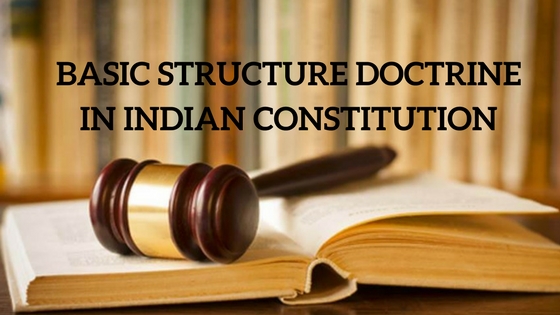
Basic Structure Doctrine (Indian Constitution)
Basic Structure Doctrine
The "Basic Structure" doctrine is a legal concept that has emerged through judicial innovation, particularly relevant to the Indian legal framework. This doctrine stipulates that specific elements of the constitution are indispensable for the proper functioning of the state, and these elements are beyond the scope of Parliament's amending powers.
Notably, the term "Basic Structure" is not explicitly found in the Constitution of India; instead, it gradually evolved as a result of the ongoing debate over the extent of Parliament's authority to amend the constitution and the judiciary's power to review such amendments.
The doctrine gained formal recognition in the landmark Kesavananda Bharati case of 1973.
The historical progression of the Basic Structure Doctrine can be summarized as follows:
- 1951: The First Constitution Amendment Act, 1951, was challenged in the Shankari Prasad vs. Union of India case. The Supreme Court ruled that Parliament, under Article 368, possessed the authority to amend any part of the constitution, including fundamental rights.
- 1964: Justice J.R. Mudholkar, in the case of Sajjan Singh v. State of Rajasthan, introduced the notion that the Constitution has "basic features" and questioned whether Article 368 allowed the alteration of such basic features.
- 1967: The Golak Nath vs. State of Punjab case marked a significant shift. The Supreme Court overturned its earlier decision and stated that Parliament lacked the power to amend Part III of the constitution since fundamental rights are transcendental and unchangeable.
- 1971: The 24th Constitution Amendment Act was passed, granting absolute power to Parliament for making any changes to the constitution, including fundamental rights.
- 1971: The 25th Amendment to the Indian Constitution restricted the right to property and allowed the government to acquire private property for public use, determining compensation through Parliament rather than the courts.
- 1973: In the Kesavananda Bharati vs. State of Kerala case, the Supreme Court upheld the validity of the 24th Constitution Amendment Act while introducing the principle that Parliament could amend any provision of the constitution, provided it did not alter the basic structure of the constitution.
- 1981: The Waaman Rao case reaffirmed the doctrine and clarified that it applied to constitutional amendments made after April 24th.
Key Supreme Court judgments and components of the Basic Structure Doctrine include:
- Kesavananda Bharati Case, 1973: Emphasizing the supremacy of the Constitution, the republican and democratic form of government, the secular character of the Constitution, separation of powers, federal character, welfare state mandate, unity and integrity of the nation, and sovereignty of the country. Additionally, it preserves the freedoms granted to citizens and the principle of equality of status and opportunity.
- Various other cases, including Indira Gandhi v. Rajnarain, Kihoto Hollohon case, Minerva Mills Case, Central Coal Fields Ltd. Case, L. Chandra Kumar Case, and IR Coelho Case, have contributed to the doctrine by reinforcing principles such as the rule of law, judicial review, harmony between fundamental rights and directive principles, and effective access to justice.
- The National Legal Services Authority v. Union of India case explicitly established Article 14 as an integral part of the basic structure of the Constitution.
In summary, the Basic Structure Doctrine in India encompasses the idea that certain fundamental features of the constitution are immune to unilateral amendment by Parliament, safeguarding the core principles of the nation's governance and rights of its citizens.